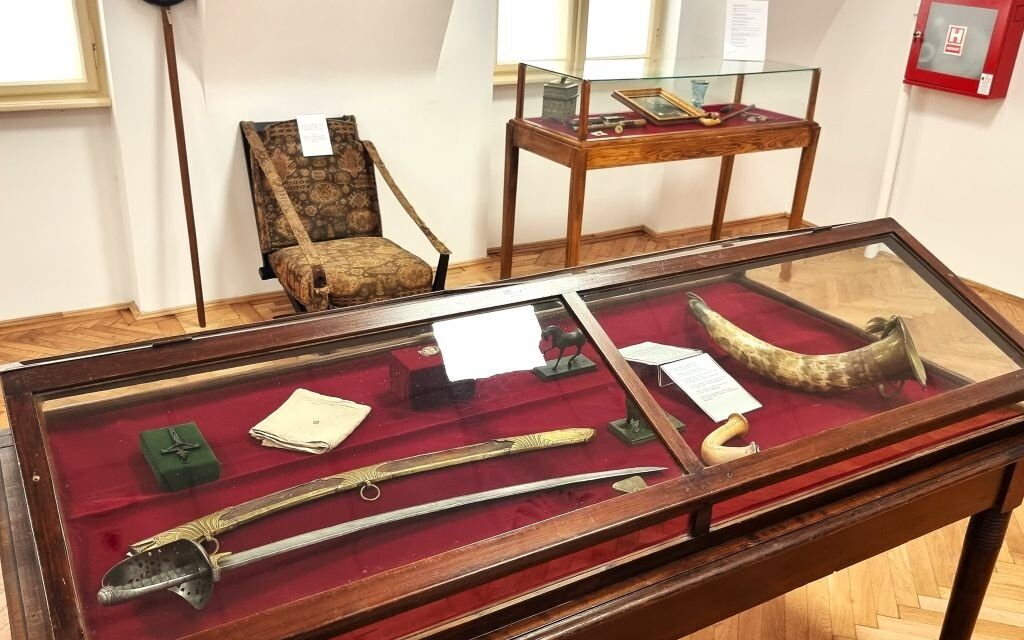On the occasion of the 175th anniversary of the bloody retribution of the Hungarian revolution and freedom struggle of 1848-1849, the Arad County Museum is organizing an extraordinary exhibition from the collection of the '48 Relic Museum.
Rarely or never-seen relics of the 13 martyrs are on display at a chamber exhibition. The relic museum can be visited for free on weekends, and the Kölcsey Association also offers guided tours for those interested.
The relic museum, founded 131 years ago - the predecessor of today's museum in Arad - is the third largest 1848-1849 collection after the material of the Budapest National Museum and the Institute of Military History and Museum, and its value is enhanced by the fact that it was created as a result of a civil partnership. It consists of more than 17,000 documents and tangible memories, only a fraction of which can be seen in the exhibition rooms on the second floor of the Arad Palace of Culture.
The staff of the museum - in cooperation with the Kölcsey Association in Arad - are organizing an unusual exhibition on October 6, on the occasion of the 175th anniversary of the execution of the 13 army generals in Arad: personal memorabilia of those sentenced to death by the Austrian imperial court-martial are on display, which have not yet been seen by the general public, or only rarely. were exposed to the public.
The relic museum can be visited for free in the Palace of Culture on Fridays, Saturdays and Sundays from 9:00 a.m. to 5:00 p.m. Furthermore, the Kölcsey Association offers free guided tours from 11:00 a.m. on Saturdays and from 1:30 p.m. on Sundays.
By the way, the chamber exhibition can be seen for the first time on Friday afternoon in the ceremonial staircase of the Palace of Culture by those who take part in the conference "Retaliations" organized by the Kölcsey Association, at which historian Zoltán Babucs, senior fellow of the Institute of Hungarian Studies, talks about the uniforms of the martyrs, historian Béla Droppán Debreczeni, chief museologist of the Budapest National Museum, count Lajos Batthyány's martyrdom and secret burial, Nagyvárad historian János Fleisz's lecture on Imre Szacsvay - whose only sin was "one stroke of a pen" - and Szeged historian Péter Zakar's lecture on the priests of the Csanád diocese imprisoned by the Austrians. At the end of the symposium, János Ujj, a retired journalist, history teacher, and local historian from Arad, will present his book The Memory of Arad's Martyrs in the World.
On the eve of October 6th, two gala shows will be organized in Arad: on Saturday, violinist Zoltán Mága will give a concert in the concert hall of the Kultúrpalota from 4 p.m., and from 7 p.m. the Budapest National Theater will present József Katona's drama, Bánk bánt in the Ioan Slavici Classical Theater.
The interesting thing about the performance is that almost exactly 150 years ago, on October 3, 1874, the new Arad Grand Theater opened to the public - which at the time had the status of a National Theater and in which a professional Hungarian company operated until 1948 - and even then the They played a lot. On the national day of mourning, October 6, the program of commemorations will begin at the site of the loss, from 4 p.m., devotions and wreath-laying will be held at the obelisk of the 13 martyrs. At 5:00 p.m., a funeral mass will be held in the Minorite church in honor of the 13 martyrs (chief celebrant is Archbishop György Udvardy of Veszprém), and at 6:30 p.m. the commemoration and wreath-laying will begin at the Statue of Liberty, followed by a torchlight procession.
Featured image: Zsolt Lehel Pataky / Chronicle













